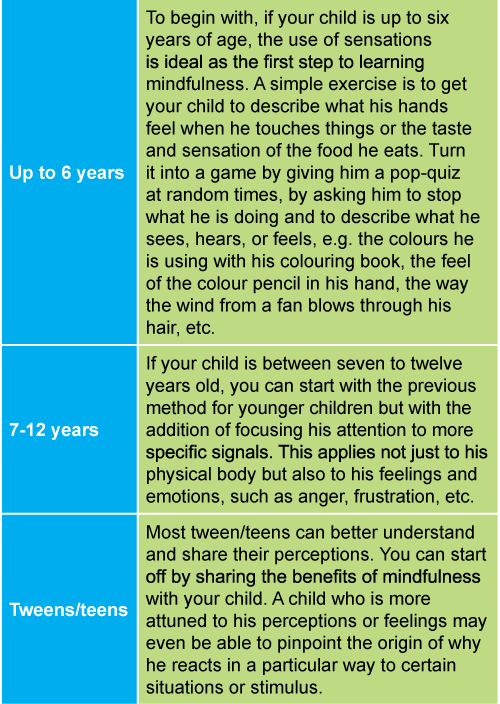There is every reason to focus on practising good lifestyle habits. Of course, there is more to good health than just eating right and exercising. While all these are necessary for maintaining good health, let’s not neglect the importance of mental health as well.
After all, life in this modern age is fast-paced and often leaves you with next to no time for yourself, thus leading to negative thoughts or feelings. Listening to relaxing music may help or even going for a run in the park to sweat it out. However, these are all things that you do after feeling negative.
How can you prevent it in the first place? You can actually improve your mental wellbeing and reduce the negative thoughts or feelings. In fact, there is a growing movement to embrace mindfulness to achieve this. Mindfulness itself is not new, having been around for a very long time. The best part is that it is not necessary for you to be religious or spiritual in order to enjoy its benefits. Western healthcare has even come up with therapies that utilise it, such as Mindfulness-Based Cognitive Therapy (MBCT) and Mindfulness-Based Stress Reduction (MBSR).
What is mindfulness?
Despite the exotic-sounding name, the bare-bones concept behind mindfulness is simple – it is all about being consciously aware of the present moment and experiencing it without making any judgements. As you hone this skill, you will find that it is a very helpful tool for dealing with stress and anxiety, both for children and adults. A simple way to help your child to understand the concept of mindfulness is this very apt quote: “Yesterday is history. Tomorrow is a mystery. Today is a gift. That’s why it’s called the present.”
Still don’t believe that mindfulness is useful? Think about the last meal you had. Can you recall anything about it? Was it just a meal to alleviate your hunger or did you enjoy it? Sadly, too many people are so busy multi-tasking that most meals are consumed in ‘autopilot’-mode, i.e. place food in mouth, chew, swallow, and repeat.
By being mindful of your meal, we would take notice of each and every component, i.e. the smell of the food, how it looks, what it tastes like, the sensation as we eat it, etc. Eating should be done with the intention of caring for one’s self and it should be done with the necessary attention, so as to notice and enjoy one’s meal and how it affects your body.
Mindfulness vs Meditation
There are many similarities between the two. It could even be said that mindfulness is a fundamental skill required prior to practising meditation. However, the simplest and most readily apparent difference between the two is in the approach, i.e. mindfulness is something that can be done at any time or place whereas meditation requires you to practice it for specific amounts of time.
Benefits of Mindfulness
Mindfulness is a mental tool that helps you gain greater self-awareness of your thoughts, behaviour and feelings. The ultimate goal is to enable you to better manage them rather than allowing them to overwhelm you. It benefits you by improving your:
- overall wellbeing – helps you focus better on the present and be less preoccupied with too many thoughts or worries.
- physical health – helps relieve stress, treat heart disease, lower blood pressure, reduce chronic pain, improve sleep, alleviate gastrointestinal difficulties
- mental health – mindfulness meditation has been shown to produce positive results in treating depression, substance abuse, eating disorders, anxiety disorders, and obsessive-compulsive disorder.
So before you start your child off on the pathway to mindfulness, it is a good idea for you to practice it yourself. It will be easier for you to guide your child along as he can emulate you as you practise mindfulness together. There are even apps that you can download to help guide you on your journey into mindfulness, such as “Stop, Breathe, and Think”, “Calm.com”, “Insight Timer”, and “MindShift”, to name a few. However, just like any journey, there will be ups and downs, so above all, be patient in your attempts to impart mindfulness to him and persevere. The whole exercise in mindfulness is to learn to be satisfied with the present. So it is very important to be kind and gentle in approach.
Mindfulness Can Help Your Child
Just as it benefits you, mindfulness will also benefit your child. Most of the time, a child’s mind is often easily distracted, or it may be consumed by thoughts of yesterday or worries of the morrow. All too often, he will simply be running on autopilot as he goes through his day, or simply “going through the motions”.
By teaching your child to be mindful, he learns how to switch his attention from his thoughts or emotions to the sensory perceptions of what’s happening around him. By consciously doing so, it allows him to be more aware of his emotional reactions, making it easier for him to be calmer and less prone to emotional outbursts. Furthermore, there is a higher likelihood of being grateful and satisfied when one is more aware of current situations where there are many things to be grateful for. How often do we notice that we are good enough and that things are also good enough? As mentioned earlier, mindfulness practice breeds the feelings of satisfaction, which is increasingly rare in our competitive world.
Other long-term benefits of mindfulness include:
- improving his memory (by improving his ability to pay attention)
- enhancing his ability to focus on the moment, thus improving his learn skills
- allowing him to better understand his thought process and how his mind works, which ultimately leads to greater self-understanding.
- learning to be satisfied with the present – “now is good enough, I am good enough”
However, do note that these outcomes are only possible through the regular practice of mindfulness – even adults face difficulties in achieving this.
Different stages for different ages
It’s very important that your child learns from the experiences that he is going through. Mindfulness practice is a gentle experiential learning method that cannot be learnt by reading or being told. So it is very helpful if you, as a parent or teacher learn how it feels like first, and how it helps.
When you first introduce mindfulness to your child, keep it as simple and as informal as possible. All that is really needed is to focus your attention on the present moment and to be in tune with what is happening both around and to you.
For children who are too young to express to you how they feel or what they experience, you may demonstrate from a story to illustrate how a person can benefit from mindfulness. You may use a model of your child’s favourite character or hero as an example so that he can be inspired by the story. Then run through the actual exercises with him.
For example, you can use the Incredible Hulk as an unmindful character who rages on when he is not in tune with his anger. Once he is calm and in tune with what is upsetting him, he can then manage his problems in a much more adaptive manner, rather than destructive.

It is very important that for all the above examples, you need to get feedback from your child on how they feel. If they feel good, remind them to be aware of those good feelings and where they come from. This helps them see the link between mindfulness exercises and feeling pleasant. If they do not make this connection, the exercises will not mean anything to them.
An educational collaboration with Malaysian Society of Clinical Psychology.






Comments